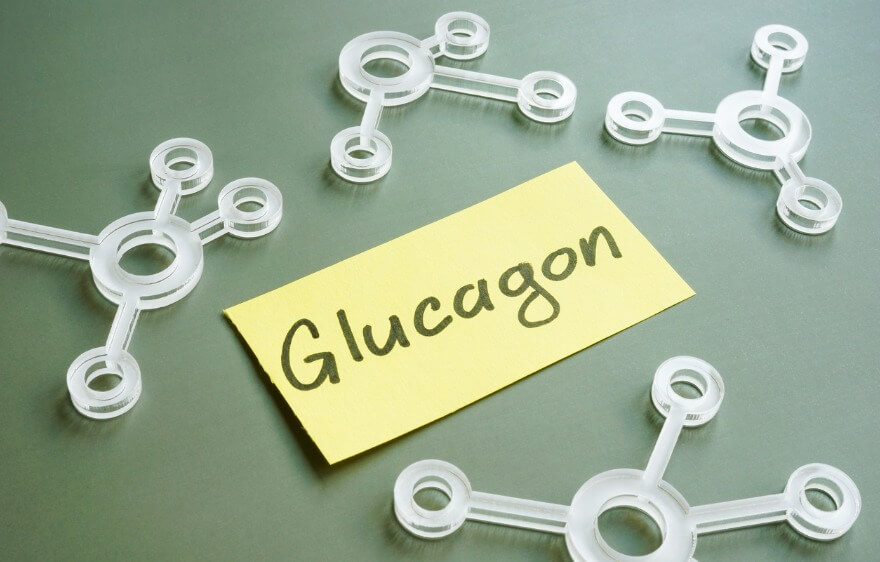When your child is diagnosed with a rare medical condition, it can feel like stepping into a world of uncertainty. You may have questions, worries, and the deep desire to understand what the future holds. Glycogen storage disease is one of those conditions that may sound unfamiliar at first, but with the right knowledge and support, families can learn to manage it successfully.
In this guide, we’ll walk you through everything you need to know about glycogen storage disease. You’ll learn what it is, how you can care for a child living with it, and the valuable role that pediatric home health services can play.
What Is Glycogen Storage Disease?
Glycogen storage disease, or GSD, is a group of inherited genetic disorders that affect the body’s ability to store and release glucose, which is a primary source of energy. In a healthy body, glucose is converted into glycogen and stored in the liver and muscles for future energy use. When the body needs energy, glycogen is broken down back into glucose. In children with glycogen storage disease, this process doesn’t work as it should because of missing or non-functioning enzymes.
Types of Glycogen Storage Disease
There are several types of glycogen storage disease, each classified by the specific enzyme deficiency involved. These deficiencies affect how the body processes and stores glycogen, leading to a range of symptoms depending on the type. The most common types include:
- GSD Type I: Known as Von Gierke disease, this is the most common form of glycogen storage disease. It results from a deficiency in the enzyme glucose-6-phosphatase, which prevents the liver from converting glycogen into glucose. Children with this type often experience low blood sugar, an enlarged liver, and growth delays. Managing blood sugar levels through frequent meals and cornstarch therapy is essential.
- GSD Type II: Known as Pompe disease, this type affects muscle function and is caused by a deficiency in the enzyme acid alpha-glucosidase. This leads to the buildup of glycogen in the cells, especially in the heart and skeletal muscles. Symptoms can range from severe muscle weakness and breathing problems in infants to more gradual onset muscle issues in later-onset forms.
- GSD Type III: Known as Forbes-Cori disease, type III is caused by a deficiency in the debranching enzyme, affecting both the liver and muscles. Children with this type may show signs of low blood sugar, enlarged liver, muscle weakness, and poor growth. Some individuals outgrow the liver symptoms, but muscle symptoms can persist into adulthood.
- GSD Type V: Known as McArdle disease, this type primarily affects skeletal muscle and is caused by a deficiency in the enzyme muscle phosphorylase. Children with McArdle disease may experience exercise intolerance, muscle cramps, and fatigue. Symptoms often become apparent in childhood or adolescence and can improve with tailored exercise and dietary management.
Each type of glycogen storage disease has its own challenges, but all share a common underlying issue — disruption in the body’s ability to manage glycogen properly. Early diagnosis and individualized treatment plans are key to improving outcomes and supporting a healthy life.
Risk Factors for Glycogen Storage Disease
Glycogen storage disease is a genetic condition, meaning it is passed down from parents to children. It is inherited in an autosomal recessive pattern, which means a child needs to receive a faulty gene from both parents to develop the disease. If both parents are carriers, there is a 25 percent chance with each pregnancy that the child will have the disease.
While anyone can be a carrier, some populations may have a slightly higher risk based on genetic background or family history. If there is a known history of glycogen storage disease or unexplained low blood sugar in infants within a family, genetic counseling may be recommended.
Recognizing the Symptoms
The symptoms of glycogen storage disease can vary depending on the type, but there are some common signs to watch for, especially in infants and young children. These include:
- Low blood sugar, especially between meals
- Enlarged liver, known as hepatomegaly
- Growth delays
- Muscle weakness or cramps
- Excessive fatigue
- Poor exercise tolerance
- Difficulty breathing, in some types, such as Pompe disease
- Delayed motor development
In some cases, symptoms might be subtle at first and become more noticeable as the child grows. Early detection can make a significant difference in how the disease is managed and in improving quality of life.
Understanding the Causes
As mentioned, glycogen storage disease is caused by mutations in genes responsible for producing enzymes that control glycogen metabolism. Without these enzymes, the body either cannot break down glycogen or cannot properly form it, leading to an accumulation of glycogen in tissues like the liver and muscles or, conversely, an insufficient energy supply when it is needed most.
Each type of glycogen storage disease is tied to a specific enzyme. For example, GSD Type I involves a deficiency in the enzyme glucose-6-phosphatase, while GSD Type II involves acid alpha-glucosidase deficiency. These mutations are typically identified through genetic testing, especially when there is a known family history.
How Is Glycogen Storage Disease Diagnosed?
Diagnosing glycogen storage disease typically begins with a detailed medical history and physical exam. If a doctor suspects GSD, they may order a combination of diagnostic tests to detect abnormalities in glucose levels, liver size, and enzyme function. Common diagnostic steps include:
- Blood tests
- Urine tests
- Imaging studies such as ultrasounds
- Liver or muscle biopsy
Genetic testing plays a crucial role in confirming the specific type of glycogen storage disease. Identifying the exact mutation can help tailor treatment and provide important information for family planning and future medical decisions.
Treatment and Management
While there is no cure for glycogen storage disease, many types can be managed effectively through dietary and medical interventions. The goal of treatment is to maintain stable blood sugar levels and reduce the risk of long-term complications. Specific treatment and management approaches include:
- Frequent feedings that include complex carbohydrates and cornstarch to help maintain blood glucose levels for children with GSD Type I
- Enzyme replacement therapy is common for children with GSD Type II
- Medications may be prescribed to manage symptoms, including muscle pain or liver issues
- Liver transplantation, in severe cases
Dietitians and metabolic specialists are key members of the care team, helping to design meal plans that keep the child’s energy levels stable throughout the day and night.
Caring for a Child with Glycogen Storage Disease
Parenting a child with glycogen storage disease requires a thoughtful, proactive approach. You may need to adjust daily routines around scheduled meals and medications, monitor your child’s activity levels, and stay alert for signs of low blood sugar. Emergency preparedness is also important — having quick sources of glucose on hand and knowing when to seek medical attention can be life-saving.
Emotional support for both the child and the family is essential. Children may feel different or limited in what they can do compared to their peers, and parents may experience stress or worry. Connecting with support groups, counselors, or others going through similar experiences can provide reassurance and practical advice.
The Role of Pediatric Home Health Services
One of the most meaningful supports for families affected by glycogen storage disease is pediatric home health care. These specialized services bring medical and therapeutic support directly to your home, offering a blend of convenience, consistency, and compassionate care.
Home health nurses can assist with administering medications, monitoring glucose levels, and educating families on how to manage day-to-day care. Dietitians can visit the home to evaluate nutritional needs and suggest adjustments. Physical therapists can work on strengthening exercises to improve mobility and energy. This in-home model reduces the need for frequent hospital visits and helps children stay in a familiar, comforting environment.
For children who require medical equipment or feeding tubes, home health services ensure that families have the right tools and training to use them safely. They also serve as a bridge between home and hospital care, ensuring that any changes in a child’s condition are noticed and addressed quickly.
Moving Forward With Confidence
A diagnosis of glycogen storage disease can be overwhelming, but it doesn’t have to define your child’s future. With the right combination of medical care, nutritional support, and emotional guidance, children with glycogen storage disease can thrive. Advances in genetics and treatment options continue to improve outcomes, offering new hope to families around the world.
If your family is navigating this journey, remember that you are not alone. From specialized medical teams to pediatric home health professionals, our care community is ready to support you every step of the way. With knowledge, patience, and care, living well with glycogen storage disease is entirely possible.
Schedule Your Child’s Care Assessment Today
At Care Options for Kids, we understand the unique challenges of caring for a child with severe health conditions. Our dedicated team of pediatric home health care nurses is here to support your family with compassionate, expert care tailored to your child’s needs. Contact us today to schedule an assessment and learn how we can help you navigate this journey with confidence and care.
Click here to start your journey to better care.






